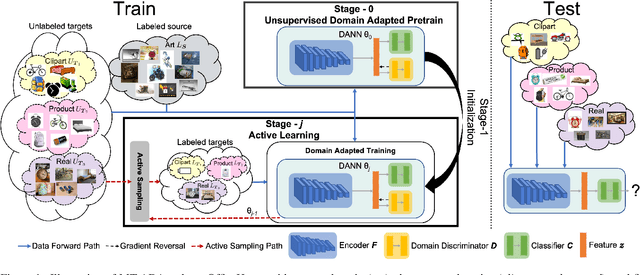Linghan Xu
Ground-V: Teaching VLMs to Ground Complex Instructions in Pixels
May 20, 2025Abstract:This work presents a simple yet effective workflow for automatically scaling instruction-following data to elicit pixel-level grounding capabilities of VLMs under complex instructions. In particular, we address five critical real-world challenges in text-instruction-based grounding: hallucinated references, multi-object scenarios, reasoning, multi-granularity, and part-level references. By leveraging knowledge distillation from a pre-trained teacher model, our approach generates high-quality instruction-response pairs linked to existing pixel-level annotations, minimizing the need for costly human annotation. The resulting dataset, Ground-V, captures rich object localization knowledge and nuanced pixel-level referring expressions. Experiment results show that models trained on Ground-V exhibit substantial improvements across diverse grounding tasks. Specifically, incorporating Ground-V during training directly achieves an average accuracy boost of 4.4% for LISA and a 7.9% for PSALM across six benchmarks on the gIoU metric. It also sets new state-of-the-art results on standard benchmarks such as RefCOCO/+/g. Notably, on gRefCOCO, we achieve an N-Acc of 83.3%, exceeding the previous state-of-the-art by more than 20%.
D3GU: Multi-Target Active Domain Adaptation via Enhancing Domain Alignment
Jan 10, 2024
Abstract:Unsupervised domain adaptation (UDA) for image classification has made remarkable progress in transferring classification knowledge from a labeled source domain to an unlabeled target domain, thanks to effective domain alignment techniques. Recently, in order to further improve performance on a target domain, many Single-Target Active Domain Adaptation (ST-ADA) methods have been proposed to identify and annotate the salient and exemplar target samples. However, it requires one model to be trained and deployed for each target domain and the domain label associated with each test sample. This largely restricts its application in the ubiquitous scenarios with multiple target domains. Therefore, we propose a Multi-Target Active Domain Adaptation (MT-ADA) framework for image classification, named D3GU, to simultaneously align different domains and actively select samples from them for annotation. This is the first research effort in this field to our best knowledge. D3GU applies Decomposed Domain Discrimination (D3) during training to achieve both source-target and target-target domain alignments. Then during active sampling, a Gradient Utility (GU) score is designed to weight every unlabeled target image by its contribution towards classification and domain alignment tasks, and is further combined with KMeans clustering to form GU-KMeans for diverse image sampling. Extensive experiments on three benchmark datasets, Office31, OfficeHome, and DomainNet, have been conducted to validate consistently superior performance of D3GU for MT-ADA.
Calibration-Aware Margin Loss: Pushing the Accuracy-Calibration Consistency Pareto Frontier for Deep Metric Learning
Jul 08, 2023



Abstract:The ability to use the same distance threshold across different test classes / distributions is highly desired for a frictionless deployment of commercial image retrieval systems. However, state-of-the-art deep metric learning losses often result in highly varied intra-class and inter-class embedding structures, making threshold calibration a non-trivial process in practice. In this paper, we propose a novel metric named Operating-Point-Incosistency-Score (OPIS) that measures the variance in the operating characteristics across different classes in a target calibration range, and demonstrate that high accuracy of a metric learning embedding model does not guarantee calibration consistency for both seen and unseen classes. We find that, in the high-accuracy regime, there exists a Pareto frontier where accuracy improvement comes at the cost of calibration consistency. To address this, we develop a novel regularization, named Calibration-Aware Margin (CAM) loss, to encourage uniformity in the representation structures across classes during training. Extensive experiments demonstrate CAM's effectiveness in improving calibration-consistency while retaining or even enhancing accuracy, outperforming state-of-the-art deep metric learning methods.
 Add to Chrome
Add to Chrome Add to Firefox
Add to Firefox Add to Edge
Add to Edge